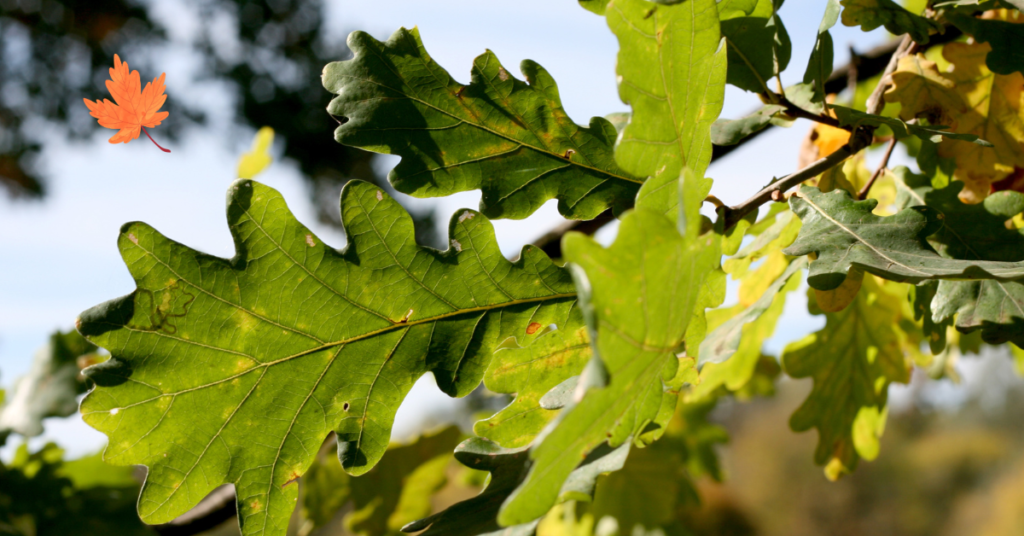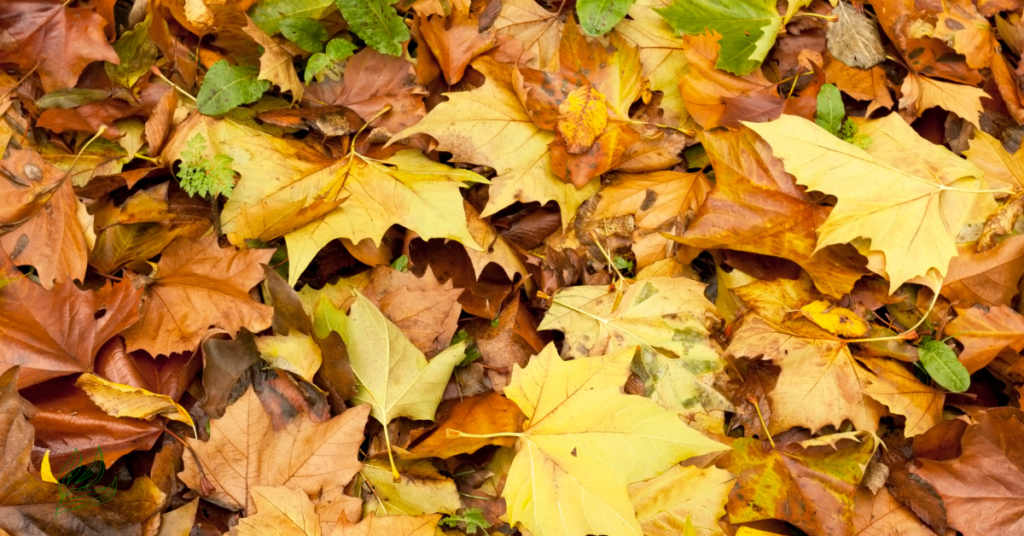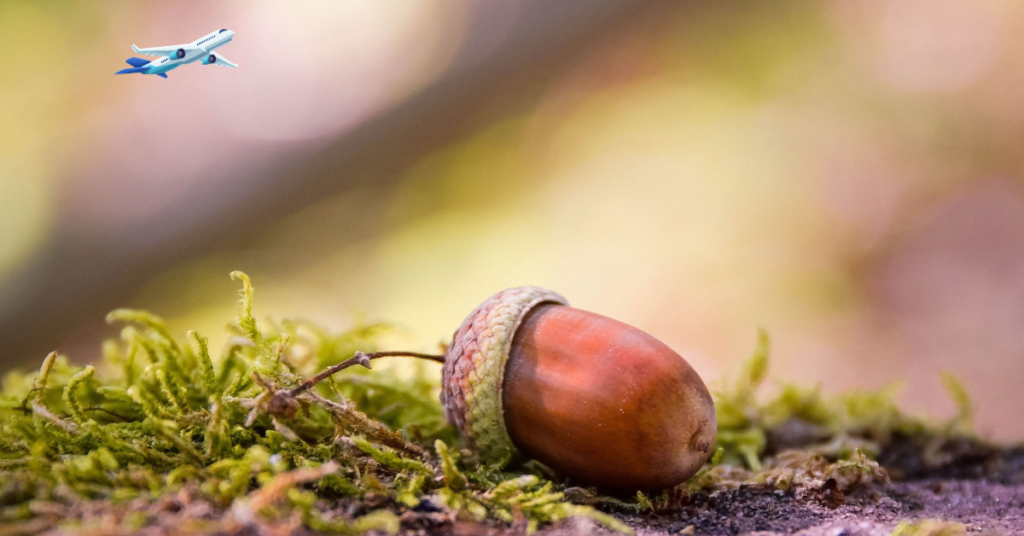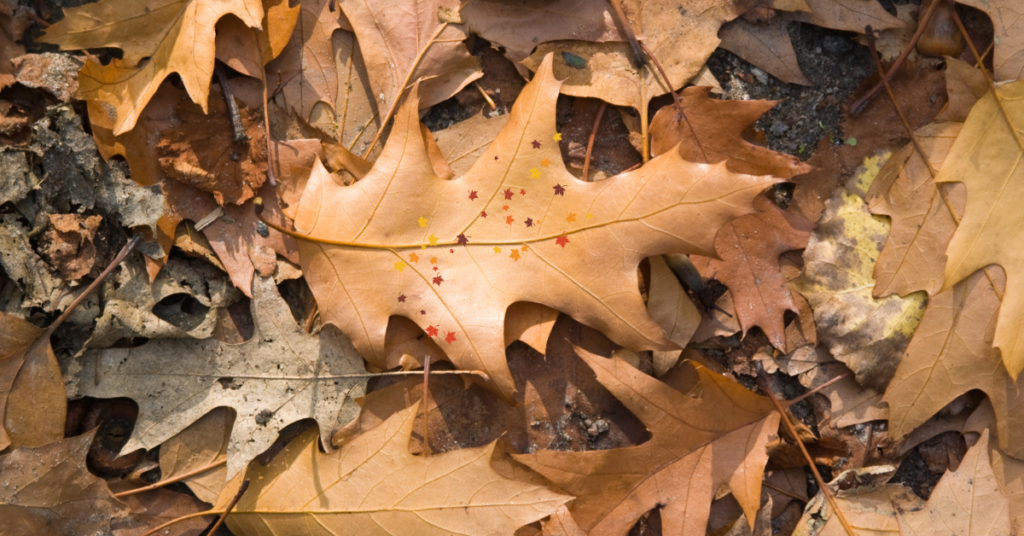Oak Tree Leaves Turning Brown? Oak trees are known for their quality, magnificence, and life span. Their rich, green foliage gives a lovely canopy in our scenes. In any case, if you note that the clears out on your oak trees are turning brown, it’s imperative to address the issue instantly. This article investigates why oak trees take off and turn, dives into common causes, and offers arrangements to keep your oak trees healthy.
Understanding Oak Tree Leaf Discoloration

Understanding Oak Tree Leaf Discoloration
Different components can cause oak tree leaf discoloration, and understanding the fundamental issue includes watching the particular indications and conditions. Here are a few common causes:
- Nutrient Lacks: Yellowing takes off might demonstrate a need for fundamental supplements, such as nitrogen, press, or magnesium. For illustration, nitrogen insufficiency regularly causes more seasoned takes off to turn yellow and drop prematurely.
- Watering Issues: Both over-watering and under-watering can stretch oak trees. Over-watered trees may show yellowing clears out and root spoil, whereas under-watered trees frequently appear browning and dry, firm leaves.
- Pests and Illnesses: Creepy crawlies like aphids or infections such as oak shrivel or fine mild can cause discoloration. Side effects change; for illustration, oak shrivels May cause takeoff to turn brown and drop off prematurely.
- Environmental Push: Extraordinary temperatures, contamination, or physical harm can lead to leaf discoloration. For occasion, sudden changes in climate or dry spell conditions can cause takes off to turn brown or yellow.
- Soil pH Awkwardness: Oak trees favor somewhat acidic to impartial soil. Noteworthy pH awkwardness can influence supplement accessibility, leading to leaf discoloration.
Key takeaways: Oak Tree Leaves Turning Brown?
- Watering Issues: Both over- and under-watering can cause clears out to brown. Guarantee the tree gets satisfactory, reliable dampness, but dodge water logging.
- Pests: Creepy crawlies like oak vermin, aphids, or scale can harm takes off. Check for signs of bugs and take fitting measures if needed.
- Diseases: Contagious contamination, like oak shrink or anthracite, can lead to browning. Look for designs or spots on clear out, and counsel with a tree master if you suspect infection.
What Does Brown Leaf Discoloration Indicate?

What Does Brown Leaf Discoloration Indicate?
When you inquire, “Why are oak trees clearing out and turning brown?” It’s essential to get that brown takeoff, which can be a sign of a few potential issues. Discoloration frequently shows push or harm to the tree. Brown reveals that it might not be unattractive but can also indicate essential well-being.
Factors Impacting Oak Tree Health
Several components can lead to oak tree leaf discoloration. These incorporate natural stresses, bother perversions, infections, and care homes. By recognizing the cause, you can take the fitting steps to address the issue.
Oaktree’s well-being is affected by an assortment of components, including:
- Soil Quality: Oak trees tend toward well-drained, loamy soils. The soil pH ought to be somewhat acidic to neutral (pH 6.0 to 7.0). Destitute soil waste or extraordinary pH levels can influence tree health.
- Watering: Both over- and under-watering can harm oak trees. They generally require standard watering, particularly amid dry periods, but waterlogged soil can lead to root rot.
- Light: Oaks flourish in full daylight. Efficiently, light can debilitate trees and make them more vulnerable to infections and pests.
- Nutrient Accessibility: Satisfactory supplements are vital. Oak trees benefit from adjusted fertilization, although over-the-top fertilization can lead to other problems.
- Pests and Illnesses: Oak trees are powerless against different bothers, such as oak shrink insects, and infections, such as oak shrink, fine buildup, and leaf spots. Customary checking and suitable medicines are essential.
- Climate and Climate: Extraordinary climate conditions, such as extreme dry seasons, overwhelming downpours, or tall winds, can affect oak tree well-being. Oaks must be adjusted to their neighborhood climate for best results.
- Competition: Adjacent plants or trees that compete for assets can influence the well-being of an oak tree. Legitimate dispersing and administration of competing vegetation are essential.
- Physical Harm: Mechanical wounds from lawnmowers, development, or extreme storms can compromise oak tree well-being. Securing the tree from such harm is crucial.
Table for Oak Tree Leaves Turning Brown
| Cause |
Symptoms |
Potential Remedies |
| Drought Stress |
Leaves turn brown and curl, especially at the edges; wilting |
Ensure adequate watering, especially during dry periods. Mulch around the base to retain soil moisture. |
| Over watering |
Leaves may turn brown and drop prematurely; root rot can occur |
Adjust watering practices to allow the soil to dry out between watering s. Improve drainage if needed. |
| Nutrient Deficiency |
Brown spots, leaf edges may scorch; overall yellowing before browning |
Fertilise with a balanced, slow-release fertiliser. Conduct a soil test to determine specific nutrient needs. |
Common Causes of Brown Takes off on Oak Trees

Environmental Stress
Natural stretch is one of the essential reasons why oak trees clear out when turning brown. Oak trees are sensitive to changes in their environment, and variables such as dry spells, extraordinary temperatures, and impoverished soil conditions can cause their takes off to brown.
Environmental push alludes to the weights and strains on a life form or framework due to ecological changes or challenges. This concept can be connected in different settings, including:
- Ecology: In nature, natural stressors seem to incorporate extraordinary climate conditions, contamination, or territory annihilation. These stressors can affect the well-being and survival of plants, creatures, and ecosystems.
- Human Well-being: For individuals, the natural stretch might come from variables like clamor, stuffing, or presentation of toxins. These stressors can contribute to physical and mental well-being issues, influencing well-being and quality of life.
- Organizational Settings: In a working environment, the natural stretch may include angles like destitute working conditions, tall requests, or the need for assets, influencing worker execution and satisfaction.
Drought Conditions
Oak trees require steady dampness to flourish. Amid periods of dry season, the need for water can cause the clears out to turn brown and drop rashly. This is the tree’s way of preserving water and lessening stress.
Sure! Dry spell conditions indicate a delayed period of unusual moo precipitation, resulting in a water deficiency. This can affect horticulture, water supplies, and the environment. Components contributing to dry season incorporate climate designs, climate alters, and human exercises such as water abuse and deforestation. The seriousness of the dry season can change from gentle to extraordinary, influencing everything from edible yields to water accessibility for family units and businesses. Viable administration and preservation methodologies are pivotal to relieving the impact of dry spells. Feel free to ask if you have a particular address or require more subtle elements!
Temperature Extremes
Both high temperatures and ice can lead to brown clearouts. During a heat wave, the intense sun can sear the takes, whereas unforeseen ice can harm them, causing brown spots or whole clearouts to turn brown.
Beyond any doubt, I can offer help with that! Temperature extremes insinuate to the most critical and most decreased temperatures recorded in a particular zone. These extremes can alter broadly depending on the zone. For example:
- Hottest Temperature: The most lifted temperature ever recorded on Soil was 134°F (56.7°C) at Radiator Stream Cultivate in Passing Valley, California, USA, on July 10, 1913.
- Coldest Temperature: The slightest temperature recorded on Soil was −128.6°F (−89.2°C) at the Soviet Union’s Restock Station in Antarctica on July 21, 1983.
Pests and Diseases
Another reason oak trees take off and turn brown is that they are susceptible to bugs and contamination. Oak trees are also vulnerable to a wide range of unpleasant crawlies and parasitic infections.
Insect Infestations
Insects such as oak leaf rollers, oak bugs, and scale-frightening crawlies can hurt oak takes off, driving to browning. These bugs frequently feed on the sap of the clears out, causing them to turn brown and, in the long run, drop off.
Certainly! If you’re overseeing unpleasant crawly corruption, the approach to handling the issue can move depending on the frightening crawly and earnestness. Here’s a common guide:
- Identify the Frightening crawly: Knowing what kind of unpleasant crawly you’re overseeing will help you choose the best course of movement. Common intrusions consolidate ants, cockroaches, kissing bugs, termites, and mosquitoes.
- Clean and Decilitre: Various unpleasant crawlies are pulled into food and clutter. Clean your residential, store food in settled holders, and lessen clutter where frightening crawlies can hide.
- Seal Area Enters: Unpleasant crawlies can enter through small breaks and openings. Seal any cleft around entryways, windows, and foundations to expect their entry.
- Use Bug Splashes: Commercial bug showers can be reasonable for various bothers. Take after the edifying carefully and use the fitting thing for the specific insect.
Fungal Diseases
Fungal infections, such as oak shrink and fine gentle, can also cause oak leaves to turn brown. Oak shrink is a veritable disease that aggravates the tree’s vascular system, while fine mod appears as a white, fine substance on leaves that can lead to browning.
Nutrient Deficiencies
Nutrient needs can be another cause of brown oak’s problems. Oak trees require a balanced supply of supplements to maintain their health. Lacking principal supplements like nitrogen, phosphorus, or potassium can lead to leaf discoloration.
Soil Quality
Poor soil quality can result in supplement insufficiency. If your oak trees are taking off and turning brown, it might indicate that the Soil needs imperative supplements. Conducting a soil test can help distinguish deficiencies and direct you in correcting the Soil.
Soil quality alludes to the capacity of Soil to perform essential capacities that bolster plant development, natural well-being, and human well-being. Key markers of soil quality include:
- Soil Structure: Well-structured Soil has a significant adjustment of sand, residue, and clay, influencing air circulation, seepage, and root penetration.
- Nutrient Substance: Prolific Soil contains satisfactory levels of fundamental supplements like nitrogen, phosphorus, and potassium, as well as auxiliary supplements and micronutrients.
- Organic Matter: Tall natural matter substance progresses soil ripeness, dampness maintenance, and natural activity.
- PH Levels: Soil pH influences supplement accessibility. Most plants incline toward a pH run of 6 to 7, even though a few have particular pH requirements.
- Water Holding Capacity: Great Soil can hold satisfactory dampness without waterlogging, supporting plant health.
How to Address Brown Oak Tree Leaves

Improving Watering Practices
To address the issue of brown takes off, begin by progressing your watering holes. Guarantee your oak tree gets satisfactory water, particularly amid dry periods. Be that as it may, dodge over-watering, as intemperate dampness can lead to root problems.
Improving watering hones can greatly contrast plant well-being and water preservation. Here are a few key strategies:
- Soil Dampness: Check soil dampness sometime recently when watering. Adhere your finger almost an inch into the soil; it’s time to water if it feels dry. Over-watering can be far as destructive as under-watering.
- Watering Strategies: Utilise a dribble water system or soaked hoses to convey water precisely to the plant roots. This minimizes water squandering and guarantees that the water goes where needed.
- Mulching: Apply a layer of mulch around plants to hold soil dampness, diminish vanishing, and smother weeds.
- Watering Profundity: Water profoundly and less often as possible, maybe shallow and regularly. This empowers roots to develop more profoundly and makes plants more drought-resistant.
Pest Control Measures
If bugs are causing the browning to take off, consider utilizing appropriate bug control measures. Insecticidal cleansers or green oils can help control numerous bothers. For serious invasions, you may be required to counsel a proficient arborvitae.
Treating Diseases
For contagious infections, medicines may incorporate fungicides or make strides to discuss circulation around the tree. Expelling contaminated clears and branches can help anticipate the spread of disease. In the case of oak shrink, proficient mediation may be necessary.
Treating infections includes diagnosing the condition precisely through restorative assessments and tests. Medicines may incorporate medicines, surgical strategies, or treatments custom-made for the particular disorder. Moreover, lifestyle changes and preventive measures play a significant part in overseeing well-being. Continuous observation and alterations guarantee viable care and address any complications. Collaboration between healthcare experts and patients is fundamental for ideal outcomes.
Soil and Supplement Management
Addressing supplement insufficiency includes correcting the soil with vital fertilizers. A soil test can give particular suggestions for supplement application. Also, improving soil structure through natural matter can upgrade supplement availability.
Soil and supplement administration are pivotal for maintaining soil well-being and optimizing trim efficiency. Here’s a diagram of key concepts and practices:
Soil Management
- Soil Testing: Routinely test the soil to decide its supplement substance, pH level, and natural matter. This makes a difference in educated choices regarding fertilizer application and soil amendments.
- Soil Structure and Surface: Understanding soil surface (sand, residue, clay) makes a difference in overseeing water maintenance and waste. Hones, including natural matter, can move forward soil structure.
- Organic Matter: Join compost, excrement, or green fertilizer to upgrade soil richness and make strides in soil structure.
- Tillage Hones: Select fitting culturing strategies to maintain a strategic distance from soil corruption and keep up soil structure. Least culturing or no-till cultivating can offer assistance in diminishing soil disintegration and moving soil health.
Nutrient Management
- Nutrient Prerequisites: Get the particular supplement needs of distinctive crops. This includes knowing the macronutrients required (nitrogen, phosphorus, potassium) and micronutrients (press, zinc, copper, etc.).
- Fertilise Application: Apply fertilizers based on soil tests and edit needs. Consider the timing, rate, and application strategy to maximize productivity and diminish natural impact.
- Nutrient Cycling: Advance hones that upgrade supplement cycling, such as turning crops, utilizing cover crops, and applying natural amendments.
- Water Administration: Productive water system hones offer assistance to guarantee that supplements are accessible to plants and diminish supplement filtering and runoff.
FAQs About Oak Tree Leaves Turning Brown?
Q: Why is my oak tree cleared out and turning brown in the summer?
Brown takes off in summer regularly due to the dry season or warm push. Guarantee your oak tree gets adequate water, and consider giving shade amid solid heat.
Q: Can over-watering cause oak trees to turn brown?
Overwatering can lead to root decay and other issues that cause clears to turn brown. It’s essential to maintain an adjusted watering schedule.
Q: How can I tell if a bug is causing the brown to take off?
See signs of bothers such as gaps, webbing, or obvious creepy crawlies on the clears out. If you suspect bother, assess the tree frequently and consider utilizing bother control methods.
Q: What ought I do if my oak tree has brown clears out due to a contagious illness?
Treat parasitic illnesses with fitting fungicides and discuss progress in circulation around the tree. Expel contaminated takes off and branches to anticipate the spread of the disease.
Q: Is brown leaf discoloration continuously a sign of a genuine issue?
Not continuously. Sometimes, brown clears out, resulting from transitory stretch or natural conditions. Be that as it may, determined discoloration should be explored to run the show out more genuine issues.
Conclusion
If you’re pondering, “why are oak tree clears out turning brown?“, it’s significant to survey different potential causes, counting natural stretch, bugs, infections, and supplement lacks. By understanding and tending to these issues, you can offer assistance guarantee the long-term well being of your oak tree. Customary observing, appropriate care, and opportune intercessions are key to keeping up dynamic and solid oak foliage.





